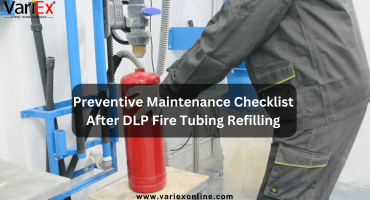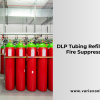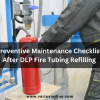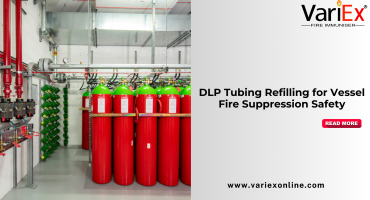![]()
Fire Immuniser
+91-7829629111
Email: info@variex.in
Varistor Technologies Pvt. Ltd.
Block-1, First Floor, Ardente Office One, Hoodi Circle, ITPL Main Road, Bengaluru, Karnataka 560048, IN
Fire Suppression System For Electrical Panels
Fire suppression systems for electrical panels play a crucial role in preventing and containing fires caused by electrical faults. These systems are designed to detect and extinguish fires swiftly, minimizing damage to equipment and ensuring the safety of personnel. In this article, we'll delve into the importance, components, and types of fire suppression systems used for electrical panels.
Importance of Fire Suppression Systems
Electrical panels are central hubs for distributing electricity within buildings, industrial plants, and various facilities. However, they are also potential fire hazards due to the high concentration of electrical components and wiring. Fires originating from electrical panels can spread rapidly, resulting in extensive damage, downtime, and safety risks.
Fire suppression systems tailored for electrical panels offer a proactive approach to mitigating these risks. By swiftly detecting and extinguishing fires at their source, these systems prevent escalation and limit the damage caused by electrical fires. Additionally, they help safeguard critical infrastructure, minimize business interruptions, and ensure compliance with safety regulations.
Components of Fire Suppression Systems
Fire suppression systems for electrical panels consist of several essential components:
Detection Mechanisms: These systems employ various detection methods, including heat sensors, smoke detectors, or gas sensors, to identify signs of fire or overheating within the electrical panel.
Control Panel: The control panel acts as the brain of the fire suppression system, processing information from detection devices and triggering the suppression mechanism when necessary. It allows for customization of settings and facilitates remote monitoring and control.
Suppression Agents: Depending on the type of system, suppression agents can include clean agents like inert gases or chemical agents such as dry chemicals or foams. These agents are deployed to suppress the fire quickly and effectively without causing further damage to electrical equipment.
Distribution System: The distribution system comprises piping or tubing connected to the suppression agent storage container and strategically placed nozzles or outlets within the electrical panel. It ensures even distribution of the suppression agent for thorough coverage.
Activation Mechanism: When a fire is detected, the activation mechanism initiates the discharge of the suppression agent into the electrical panel. This can be triggered automatically by the control panel or manually by an operator.
Types of Fire Suppression Systems
Several types of fire suppression systems are commonly used for electrical panels:
Clean Agent Systems: Utilize inert gases such as FM-200, CO2, or Novec 1230 to extinguish fires by reducing oxygen levels or interfering with the chemical reaction. Clean agent systems are ideal for protecting sensitive electronic equipment as they leave no residue and are safe for humans.
Dry Chemical Systems: Employ dry chemical agents like ABC powder or potassium bicarbonate to smother fires by interrupting the combustion process. While effective, these systems may leave residue that requires cleanup and can be corrosive to certain materials.
Foam Systems: Combine foam concentrate with water to create a blanket of foam that suffocates the fire and cools the affected area. Foam systems are suitable for Class B (flammable liquids) and Class C (electrical) fires, offering rapid suppression and cooling.
Advanced Features and Considerations for Fire Suppression Systems in Electrical Panels
1. Pre-Action Systems:
- Pre-action systems are designed for environments where accidental discharge of suppression agents could cause significant damage or disruption, such as data centers or server rooms.
- These systems incorporate an additional step before agent discharge, requiring confirmation of fire detection to prevent false alarms.
- Pre-action systems are highly reliable and offer added protection against accidental discharges.
2. Early Warning Systems:
- Some fire suppression systems integrate early warning capabilities, providing alerts of potential fire hazards before they escalate into full-blown fires.
- Early warning systems may utilize advanced sensors, infrared imaging, or machine learning algorithms to detect abnormal heat patterns or electrical anomalies.
- By providing early detection, these systems enable individuals to take proactive measures, thereby reducing the risk of fire incidents.
3. Remote Monitoring and Control:
- Modern fire suppression systems often feature remote monitoring and control capabilities, allowing facility managers to oversee system status and performance from a centralized location.
- Remote monitoring enables real-time alerts and notifications, facilitating swift response to potential fire events.
- Remote control functionalities allow for system adjustments, testing, and activation without the need for on-site personnel, enhancing operational efficiency and safety.
4. Integration with Building Management Systems (BMS):
- Integration with BMS enables seamless coordination between fire suppression systems and other building systems, such as HVAC, access control, and alarm systems.
- BMS integration allows for automated responses to fire events, such as activating ventilation systems to remove smoke or initiating evacuation procedures.
- By centralizing control and monitoring, BMS integration enhances overall building safety and efficiency.
5. Maintenance and Testing Considerations:
- Regular maintenance and testing are essential to ensure the reliability and effectiveness of fire suppression systems.
- You should conduct scheduled inspections, functional tests, and equipment maintenance according to manufacturer recommendations and regulatory requirements.
- Technicians should properly train to perform maintenance tasks and identify any issues that may compromise system performance.
- Additionally, you should document records of maintenance activities and test results for compliance and accountability purposes.
6. Environmental Considerations:
- When selecting a fire suppression system, consider environmental factors such as temperature, humidity, and presence of sensitive equipment.
- Certain suppression agents may be better suited for specific environmental conditions, while others may pose risks to human health or the environment.
- It's important to evaluate the environmental impact of suppression agents and ensure compliance with regulations such as the Montreal Protocol and local environmental regulations.
Conclusion
Fire suppression systems for electrical panels have evolved to incorporate advanced features and considerations to enhance their effectiveness, reliability, and safety. By leveraging technologies such as pre-action systems, early warning capabilities, remote monitoring, and integration with building management systems, these systems offer comprehensive protection against electrical fires while minimizing the risk of false alarms and downtime. Effective maintenance practices and environmental considerations are also crucial aspects of ensuring the optimal performance and sustainability of fire suppression systems in various settings.
Frequently Asked Questions
A fire suppression system for electrical panels is a specialized system designed to detect and extinguish fires that originate within electrical enclosures, such as distribution panels, switchgear, or control panels. These systems are essential for mitigating the risks associated with electrical fires and minimizing damage to equipment and facilities.
Fire suppression systems for electrical panels typically consist of detection mechanisms, control panels, suppression agents, distribution systems, and activation mechanisms. When a fire or overheating event is detected, the system triggers the release of a suppression agent, such as inert gases or chemical agents, to extinguish the fire and prevent its spread.
Common suppression agents used in fire suppression systems for electrical panels include inert gases like FM-200, CO2, or Novec 1230, as well as dry chemical agents such as ABC powder or potassium bicarbonate. The choice of suppression agent depends on factors such as the type of fire risk, environmental considerations, and equipment compatibility.
Yes, there are various types of fire suppression systems tailored for different applications and environments. Some common types include clean agent systems, dry chemical systems, and foam systems. Each type has its advantages and suitability depending on factors such as the type of fire risk, equipment sensitivity, and regulatory requirements.
- Installing a fire suppression system for electrical panels offers several benefits, including:
- Rapid detection and suppression of fires, minimizing damage to equipment and facilities.
- Enhanced safety for personnel by reducing the risk of fire-related injuries or fatalities.
- Protection of critical infrastructure and assets, minimizing downtime and business interruption.
- Compliance with safety regulations and insurance requirements, ensuring legal and financial protection.
Final Say
We at VariEx.in or Variexonline.com have mastered the art of designing, installing, inspecting, and fixing automatic sprinkler systems with the help of our in-house team, which is capable of delivering the fire sprinkler services you need, whether large or small and at affordable cost.
To schedule a fire sprinkler installation, or you think our services could benefit your commercial property, contact us online or give us a call at, 7829629111
"WHAT YOU CAN READ NEXT"
 Read more +24 November 2023 in Fire Extinguisher
Read more +24 November 2023 in Fire ExtinguisherWhat types of fire extinguishers are available for different fire classes?
 Read more +11 July 2025 in Fire Suppression
Read more +11 July 2025 in Fire Suppression






